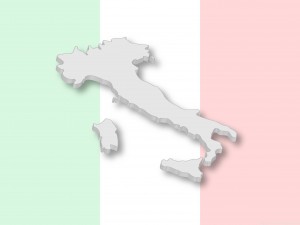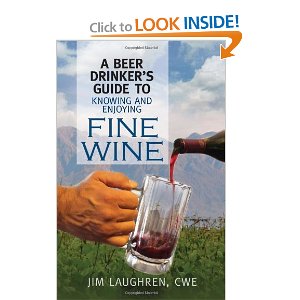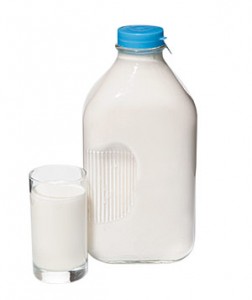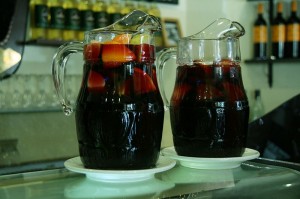by Lorri | Sep 11, 2013 | UnCorked
I was recently asked an interesting question: Most of us are familiar with great food and wine pairings but is there a list to steer clear of?
Remember, the ideal pairing is when food and wine put together create something even better. But there certainly are food and wine matches that should never show up at the table together.
Dry Champagne and sweet wedding cake: Many assume Champagne fits any wedding celebration. And for simply toasting, it does. But most wedding cakes are very sweet and tend to overpower dry sparkling wine. For enjoying with the cake, the best fit is bubbly with sweetness.
Raw fish and tannic red wines: Possibly one of the most significant mis-matches is a dry tannic red wine with caviar, sushi, oysters, sashimi or even tuna salad. It starts with a texture interaction giving the fish a sandy feel (regardless of the actual texture),which is followed by a clash of flavors. But it gets worse; often this pairing finishes with a metallic or tin can taste that lingers on your tongue. When serving raw fish and caviar, your best bets are white or sparkling wines.
Deer steak with moscato: An equally bad pairing is a robust, strong meat and a light, frothy wine. This type of match doesn’t have a chance to harmonize because of the power of the meat. The best fit would be using the default rule of red meat with red wine.
Heavy high-alcohol wine with extremely spicy food: Another at the top of the misfit list is heavily oaked, high-alcohol red wine with extremely spicy food. In this case the wine and food amplify each other. The high alcohol burns. The spices burn. And together this intensifies and can be almost unbearable, resulting in the flavors of the food getting washed out.
Red wine and vinegar: This pairing can occur unexpectedly and innocently with just a simple splash of vinegar in a sauce to “brighten” the flavor. But the most common culprit is a salad dressed with vinaigrette. When tasting and accessing wine, the smell or taste of vinegar is usually detected as a fault, so putting the two side by side offers some pairing confusion.
by Lorri | Sep 4, 2013 | UnCorked
 In the past few years Moscato has earned a solid spot in the top five white wines being consumed in the United States, becoming even more popular than sauvignon blanc and Riesling. And it looks like it is here to stay. Moscato is one of the fastest growing styles of wine, with sales up 70 percent in a given year.
In the past few years Moscato has earned a solid spot in the top five white wines being consumed in the United States, becoming even more popular than sauvignon blanc and Riesling. And it looks like it is here to stay. Moscato is one of the fastest growing styles of wine, with sales up 70 percent in a given year.
Moscato is made from the Muscat family of white grapes. Italy’s Piedmont region is one of the homes to this wine style, Moscato d’Asti. If you’re thinking a frothy, fizzy, fairly neutral wine, you may be thinking of its cousin, Asti Spumante. Sadly, many confuse Moscato d’Asti with Asti Spumante, which is produced in the same region with the same grape, the moscato bianco.
In the past, when the trendy demand for Asti skyrocketed, the Piedmont area produced millions of bottles of this fizzy, easy-drinking style of wine, more than 80 million bottles a year. But as with most trends, the demand dropped off as the world moved onto another, more fashionable grape. Because of the enormous amount of production and an astounding export volume, Moscato d’Asti became lumped with the cheap, cheerful, sweet Asti, leading consumers to think they were one and the same.
The style of Moscato with which American consumers are enthralled is lightly sparkling, low alcohol (often in the 7 to 8 percent range) and beautifully fruity. So judge for yourself the force of the grape as a companion to food, refreshing on its own, or simply dessert.
THE VALUES
- NV Mezzacorona Moscato, Italy (about $13 retail)
- NV Stella Rosa Moscato, Italy (about $14 retail)
- NV Ecco Domani Moscato, Italy (about $13 retail)
THE SPLURGES
- 2011 Marchesi di Barolo Moscato d’Asti, Italy (about $20 retail)
- NV Marco Negri Moscato d’Asti, Italy (about $20 retail)
by Lorri | Aug 14, 2013 | UnCorked
 Smaller than the state of California, Italy remains one of the world’s leading producers of wine, and is home to more native wine grapes than any other country. Italy is probably best known for its full-bodied reds, and considering many of us are looking for refreshing and zippy flavors as summer temperatures continue to rise, Italian wine (other than pinot grigio) is likely not our first thought.
Smaller than the state of California, Italy remains one of the world’s leading producers of wine, and is home to more native wine grapes than any other country. Italy is probably best known for its full-bodied reds, and considering many of us are looking for refreshing and zippy flavors as summer temperatures continue to rise, Italian wine (other than pinot grigio) is likely not our first thought.
We continue to be smitten with Italian pinot grigio but there are other bright, refreshing Italian superstars.
Soave is one of my favorites, for its relatively low alcohol content (usually around 12 percent) and light-bodied refreshing taste. Look for “Classico” on the label. This lets you know it was produced in the heartland using the traditional expression of the garganega grape. Italian law stipulates Soave must be a blend of 70 percent garganega and 30 percent blend of chardonnay, trebbiano di Soave and pinot blanc.
THE VALUE
- 2012 Re Midas Cantina Di Soave, Italy (about $10 retail)
THE SPLURGE
- 2012 Folonari Soave, Italy (about $13 retail)
Orvieto is made from the trebbiano grape. Usually an assortment of other Italian whites are added to the blend. In the past it was known as a sweetish style of wine using “noble rotten” grapes, but the more modern styles are generally dry. It is aromatic, with fresh lemony fruitiness and the occasional hint of almond.
THE VALUE
- 2011 Villa Antinori Orvieto, Italy (about $13 retail)
THE SPLURGE
- 2011 Argillae Orvieto DOC, Italy (about $18 retail)
Most consumers have never explored the refreshing taste of Gavi. This wine is another of my favorites, not only because of the excellent value but its ability to pair with almost any summer menu. Made from the cortese grape, it usually has a crisp acidity that can range from almost tart to mellow and citrusy.
THE VALUE
- 2012 Michele Chiarlo Gavi, Italy (about $22 retail)
THE SPLURGE
- 2012 Pio Cesare Cortesa Di Gavi (about $28 retail)
by Lorri | Aug 7, 2013 | UnCorked
 I just finished an interesting book for the die-hard beer drinkers out there: A Beer Drinker’s Guide to Knowing and Enjoying Fine Wine by James Laughren. The book encourages the beer drinker to embrace getting to know the other fermented beverage. Laughren clears a path through the wine world with tips “hidden among nuggets of beer lore, the secret tips for appearing extra wine smart while building your knowledge.”
I just finished an interesting book for the die-hard beer drinkers out there: A Beer Drinker’s Guide to Knowing and Enjoying Fine Wine by James Laughren. The book encourages the beer drinker to embrace getting to know the other fermented beverage. Laughren clears a path through the wine world with tips “hidden among nuggets of beer lore, the secret tips for appearing extra wine smart while building your knowledge.”
I am by no means a beer expert, but with a little research and tasting opportunities I put together a few styles of beer easily complementing a wine style.
If you like pale ale you may like pinot noir. Pinot noir is a lighter red wine without the heavy tannic bite you usually get from fuller bodied wines. Also similar to beer, pinot noir’s light style makes it easy to serve chilled.
THE VALUE
- 2011 Gnarly Head Pinot Noir, California (about $12 retail)
THE SPLURGE
- 2011 A to Z Oregon Pinot Noir, Oregon (about $22 retail)
If you like light beer or American lager, you may like brut cava. Both are bubbly and refreshing and easily pair with a variety of foods.
THE VALUE
- NV Freixenet Brut Cava, Spain (about $10 retail)
THE SPLURGE
- NV Sumarroca Brut Cava, Spain (about $18 retail)
If you drink IPA (India Pale Ale), you may like carmenere. Carmenere has a balance of savory, bitter and fruity.
THE VALUE
- 2011 Root 1 Carmenere, California (about $12 retail)
THE SPLURGE
- 2011 La Playa Axel Carmenere, Chile (about $26 retail)
If you drink wheat beer you may like a buttery rich chardonnay. Chardonnay offers a quenching, refreshing taste that always has a creamy smooth texture similar to a wheat beer.
THE VALUE
- 2011 Butternut Chardonnay, California (about $16 retail)
THE SPLURGE
- 2011 La Crema Sonoma Chardonnay, California (about $26 retail)
by Lorri | Jul 31, 2013 | Tips, UnCorked
 Summer is well underway and the soaring temperatures bring a recurring question from Uncorked readers: How does heat affect bottled wine?
Summer is well underway and the soaring temperatures bring a recurring question from Uncorked readers: How does heat affect bottled wine?
You run into the wine shop and grab a few bottles. On your way home you continue checking off your errand list with a stop at the cleaners, the bank and the grocery store. Meanwhile those bottles are sitting in the 100-degree-plus temperature of your parked car.
When wine is subjected to high temperatures, the quality will most likely be jeopardized. It happened to me when what I thought was going to be a quick meeting turned into a three-hour session. By the time I returned to my car, the cork was pushing out of the bottle and, worse, it leaked onto the carpet of my car.
Heat increases the rate at which wine ages or is oxidized. Oxidation is a chemical process and like most chemical processes, heat increases the reaction rate. High temperatures can affect the aging capability of wine and its taste. When wines are subjected to heat it’s no longer undergoing the ideal slow maturation because the heat-stressed wine is subjected to a sharp and awkward jolt forward in its life. Even if your just-bought wine was intended for dinner and not cellar time, heat can still affect the taste and aroma.
Call me overcautious but I now treat my wine purchase as I do ice cream or milk. You wouldn’t leave these items in the car while you take on an afternoon of errands in the summertime.
When outside temperatures are pushing the extreme, the temperature inside your home can be a problem too. Keep wine in your refrigerator if you don’t have a cellar or put it in a cool, dark place like a basement or closet corner. Keep wines away from windows or sunlight. Don’t store wine in a garage, on top of the refrigerator or in a cupboard next to the oven.If you have a standing wine rack keep it near an air-conditioning vent in the summer but far away from the heating vent in the winter.
by Lorri | Jul 24, 2013 | UnCorked
 Wine lovers are always on the lookout for ideas for summer sipping, and sangria may be the drink.
Wine lovers are always on the lookout for ideas for summer sipping, and sangria may be the drink.
The fruit-infused wine is going through a bit of an image makeover, shedding its cheap and sweet image to emerge as trendy, refreshing and premium. These ready to-drink bottles not only offer the taste of traditional recipes but are also available in innovative and shockingly refreshing styles. I recently tasted a few and found a couple worth filling an ice-cold pitcher.
When I saw the accolade of “Most Chillable Red” by NBC’s Today Show for Slices sangria, it had my attention and the tasting research began. Slices sangrias are made in Spain where sangria originated and has been shared around dining tables for hundreds of years. Slices’ recipe is from seasoned winemaker Miguel Gurpide, whose enjoyment of sangria dates back to his boyhood memories of these fruit-infused wines served at dinner in the summer. The grapes are local Spanish varieties blended with all-natural fruit juices.
Eppa SupraFruta Sangria also received great reviews. It was created by a group of friends who loved the mixture of superior wine and real fruit. They wanted a way to simply pour and enjoy premium-quality sangria. They use wine from California’s Mendocino County and have a strong emphasis on certified organic brands. The fruit is also organic and the blends for the red boast a few well-known powerhouse antioxidants of pomegranate, blueberry, blood orange and acai juice.
With more and more consumers interested in something different, something sweet and something with a nod at healthy, the new image of Spanish sangria may be worth a taste.
- 2012 Eppa SupraFruta Red, California (about $12 retail)
- 2012 Slices Red Wine Sangria, Spain (about $12 retail)
- 2012 Slices Rose Wine Sangria, Spain (about $12 retail)
- 2012 Slices White Wine Sangria, Spain (about $12 retail)
 In the past few years Moscato has earned a solid spot in the top five white wines being consumed in the United States, becoming even more popular than sauvignon blanc and Riesling. And it looks like it is here to stay. Moscato is one of the fastest growing styles of wine, with sales up 70 percent in a given year.
In the past few years Moscato has earned a solid spot in the top five white wines being consumed in the United States, becoming even more popular than sauvignon blanc and Riesling. And it looks like it is here to stay. Moscato is one of the fastest growing styles of wine, with sales up 70 percent in a given year. Smaller than the state of California, Italy remains one of the world’s leading producers of wine, and is home to more native wine grapes than any other country. Italy is probably best known for its full-bodied reds, and considering many of us are looking for refreshing and zippy flavors as summer temperatures continue to rise, Italian wine (other than pinot grigio) is likely not our first thought.
Smaller than the state of California, Italy remains one of the world’s leading producers of wine, and is home to more native wine grapes than any other country. Italy is probably best known for its full-bodied reds, and considering many of us are looking for refreshing and zippy flavors as summer temperatures continue to rise, Italian wine (other than pinot grigio) is likely not our first thought. I just finished an interesting book for the die-hard beer drinkers out there: A Beer Drinker’s Guide to Knowing and Enjoying Fine Wine by James Laughren. The book encourages the beer drinker to embrace getting to know the other fermented beverage. Laughren clears a path through the wine world with tips “hidden among nuggets of beer lore, the secret tips for appearing extra wine smart while building your knowledge.”
I just finished an interesting book for the die-hard beer drinkers out there: A Beer Drinker’s Guide to Knowing and Enjoying Fine Wine by James Laughren. The book encourages the beer drinker to embrace getting to know the other fermented beverage. Laughren clears a path through the wine world with tips “hidden among nuggets of beer lore, the secret tips for appearing extra wine smart while building your knowledge.”
